The Broadway Theater, Broadway, New York
November 7, 2018
When King Kong opened in Melbourne back in 2013, for many it was a case of great monkey, shame about the rest. Global Creatures, who cut their teeth on the arena spectacular Walking with Dinosaurs, clearly knew a thing or two about puppetry, but their first attempt at producing a blockbuster musical seemed to have fallen at the first hurdle with book, lyrics and music all copping a pasting. Five years, and many millions of dollars later, the gorilla is back, and this time he’s on Broadway (ironically a mere stone’s throw from the very Empire State Building its protagonist is required to scale in the dying seconds of the match). So, have they pulled it off this time? Will the gorilla win through? To quote Evita: “and the answer is yes, and no, and yes, and no…”
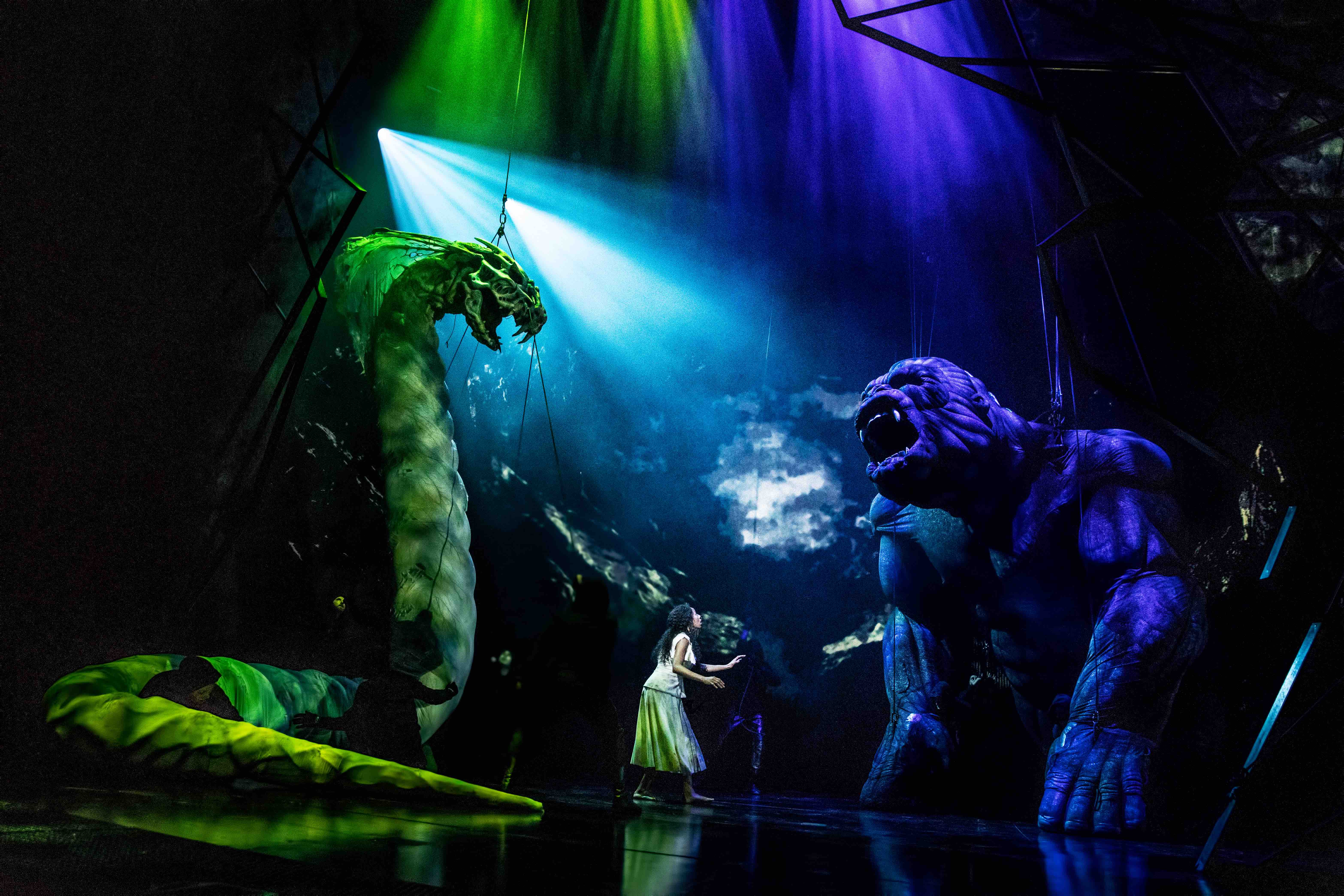 Christiani Pitts as Ann and King Kong. Photo © Matthew Murphy
Christiani Pitts as Ann and King Kong. Photo © Matthew Murphy
Let’s start with the basics. This is King Kong, right? Whether you work from the 1933 film or the subsequent novella, it’s a wafer-thin tale. Boy meets girl. Boy and girl sail to mysterious island where they meet giant gorilla. Gorilla falls for girl, before boy brings him back to New York where he runs amok, grabs girl and falls off the top of a very tall building. In other words, Anna Karenina it ain’t. That said, there are issues here that can be explored. There’s greed versus respect for other lifeforms. There’s man versus woman, man versus animal, ambition versus human decency. The original featured some highly dubious depictions of ‘natives’, and the girl – the immortal Fay Wray – was mostly there just to scream. Might a 21st-century take address those issues, even make some valuable points?
Since 2013, there has been a revolving door of creatives on the project. Out went original director Daniel Cramer and his replacement Eric Schaeffer. Playwright Craig Lucas was replaced by book writer Jack Thorne, whose recent successes include Harry Potter and the Cursed Child. Lyricist Marsha Norman came and went, along with composer Jason Robert Brown, to be replaced by a combination of Marius de Vries (who wrote the original score) and Australian songwriter Eddie Perfect. At the helm now is one of British musical theatre’s hotter properties, director/choreographer Drew McOnie.
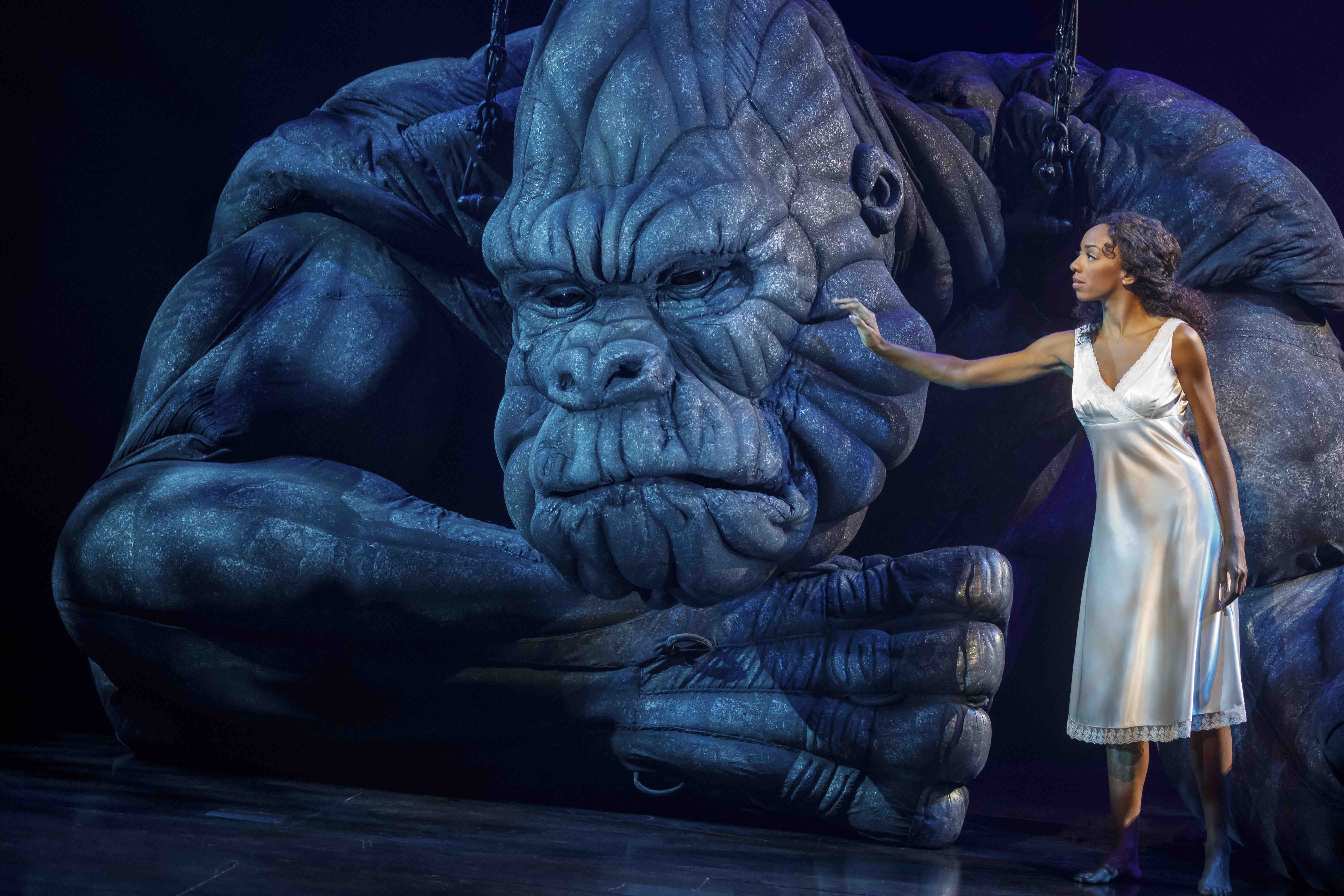 Christiani Pitts as Ann Darrow and King Kong. Photo © Joan Marcus
Christiani Pitts as Ann Darrow and King Kong. Photo © Joan Marcus
First things first, McOnie has done a remarkable job staging this blockbuster. The movement, in theory his specialty, is deeply rooted in character – though as much in the character of the city or the character of the jungle as anything – and frequently thrilling. The choreography is bold, athletic and original by turns, his hard-working ensemble a fine-tuned machine. Each actor or dancer’s every moment is weighed, considered, and given just that dash of individuality that helps him or her to tell their bit of the story without ever pulling focus from the endgame. As narrative dance it’s quite brilliant, but the acting across a plethora of minor roles is never less than adequate either.
And then there’s the stage. Peter England’s scenic design, aided by some of the most advanced projection work I’ve seen in any theatre and Peter Mumford’s dazzling lighting design, is detailed yet fluid, transporting us from the mean streets of midtown New York, to a building site complete with flying cranes and girders, to backstage at a vaudeville theatre in the blink of an eye. When the boat sails past the Statue of Liberty on a moonlit Manhattan night, so convincing is the swell that you can get a queasy feeling in your stomach. The chase sequences later on are breathtaking, as is the dénouement atop the Empire State – vertigo sufferers please take note.
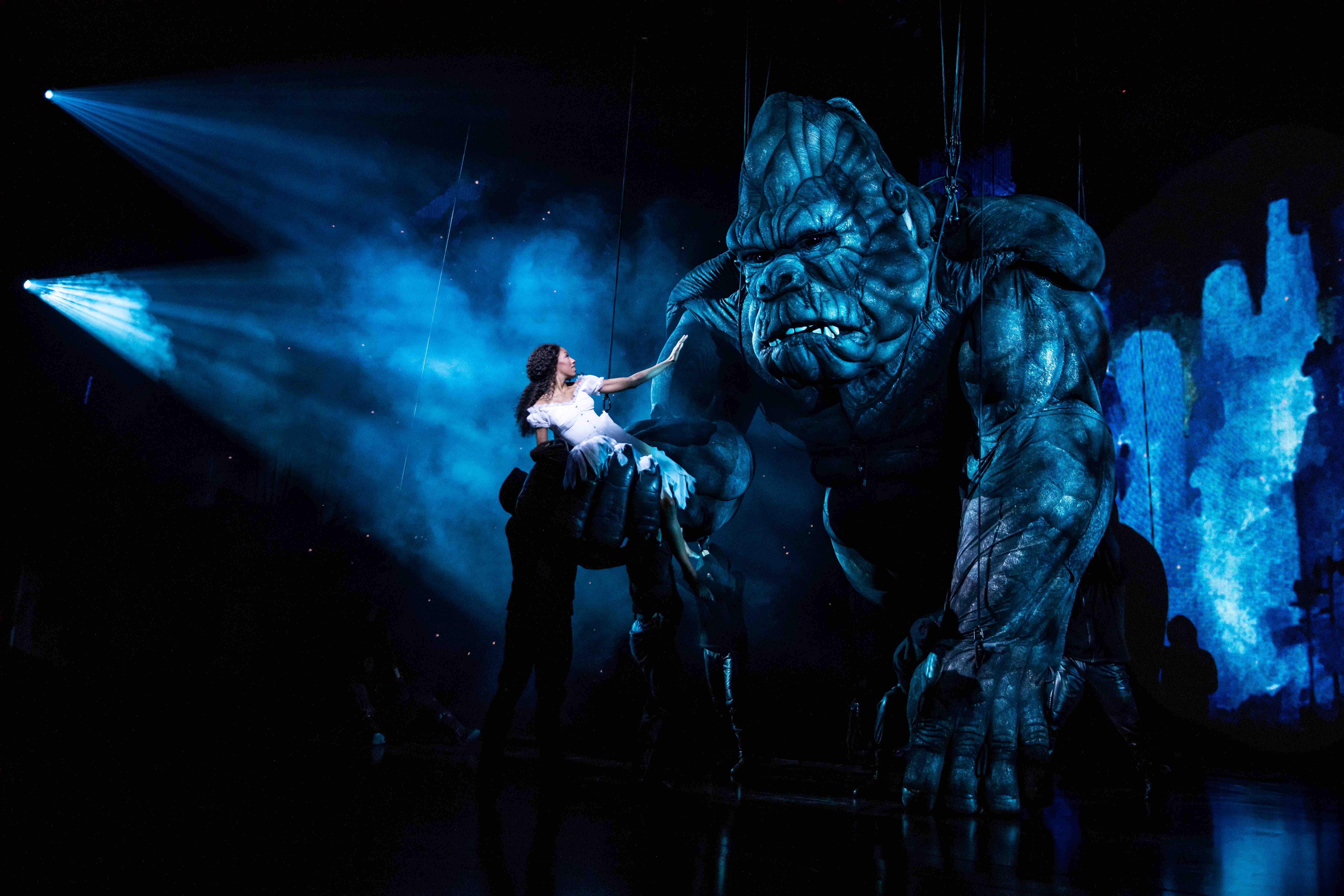 Christiani Pitts as Ann Darrow and King Kong. Photo © Matthew Murphy
Christiani Pitts as Ann Darrow and King Kong. Photo © Matthew Murphy
And the monkey? Well, he’s as impressive as he ever was – perhaps even more so. A two-storey behemoth, he’s manipulated by a whole crew of black clad puppeteers via a combination of ropes and pulleys plus entire teams dedicated to hands, feet and most impressively face and features. When he roars – a remarkably palpable element in Peter Hylenski’s magnificent sound design – you feel it in your chest. When he looks sorrowfully at you, all but the stoniest heart must melt. He runs, jumps and climbs – most to least effectively in that order – and his every appearance draws applause. There is a tendency for matters to linger every time he’s on stage, but for those who have come for the thrills and spills this is most likely not a problem.
Jack Thorne‘s dialogue is convincingly written – or as convincing as dialogue can be in a tale that demands a sizeable suspension of disbelief. The major characters have been boiled down to just three: Carl Denham, the self-centred, cocksure filmmaker, Ann Darrow, the farm girl turned wannabe actress, and a moral compass figure going by the name ‘Lumpy’, if you are thoughtless like Carl, or ‘Len’, if you have compassion like Ann. There are problems here, however. Carl displays initial charm, but becomes too selfish, too thoughtless, too quickly. Ann has a more interesting journey, desperate to make it, yet scared to stand up to Carl until it’s too late and she’s betrayed Kong. She then faces the dilemma of whether to do what’s right, especially as there appears to be no way out for a 10-tonne gorilla on the loose in Manhattan. But unfortunately, there’s little tension in any prospective love triangle. Kong is simply good, Carl is simply bad. Ann is clearly going to end up siding with the monkey.
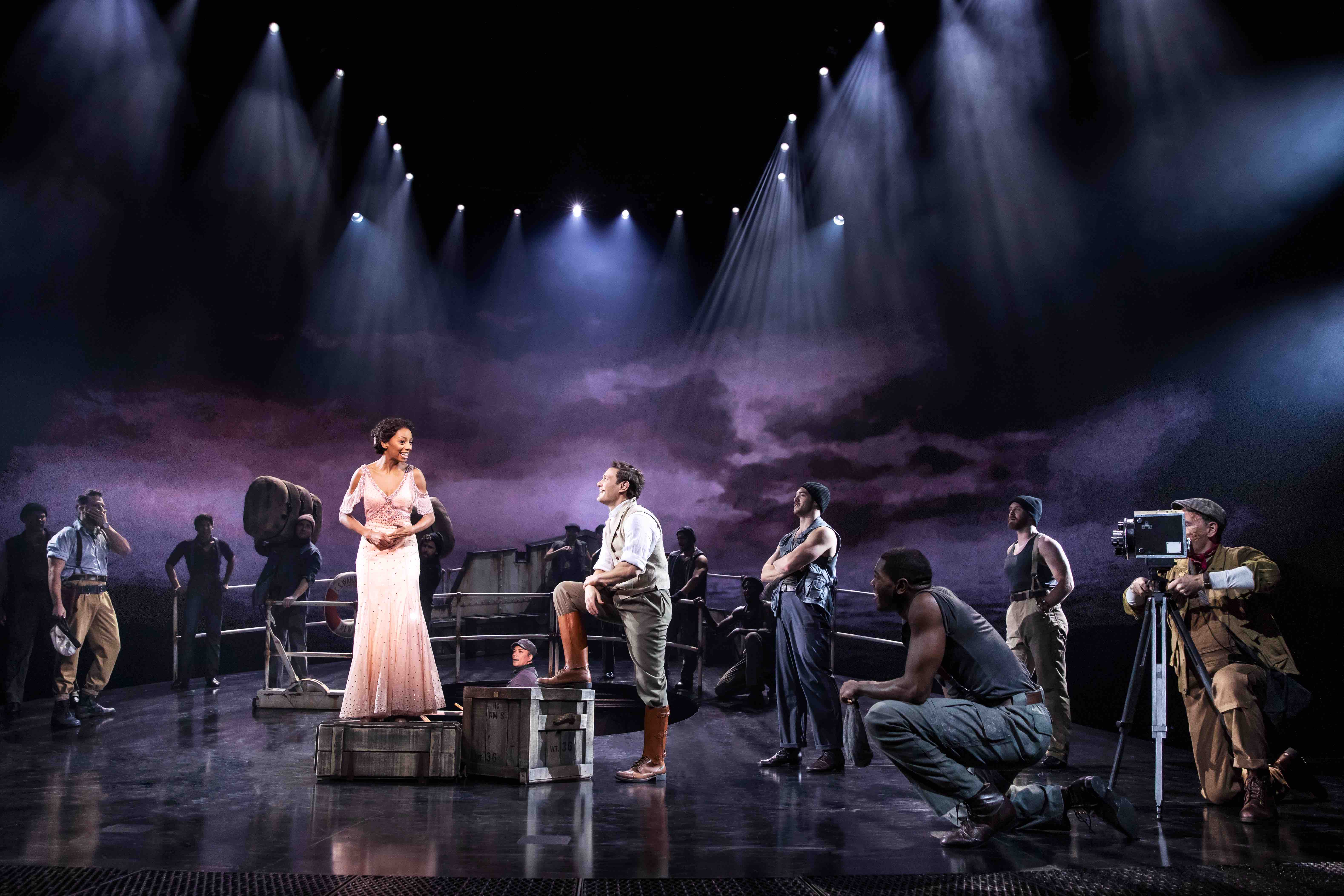 The Company of King Kong. Photo © Matthew Murphy
The Company of King Kong. Photo © Matthew Murphy
Performances are pretty decent. Christiani Pitts makes a feisty fist of Ann, her timing sure, her voice perhaps better in the more contemporary upbeat numbers than in the ballads where it displays a slight wobble. McOnie has given the role the voice it lacked in the original, focusing on Ann’s dilemma as a woman in a world where only men seem able to speak. By having her scream and betray Kong, he gives her story shape and Pitts does a great deal with it, culminating in the show’s best number, Dance my way to the light. Eric William Morris has charm as Carl, and a more than acceptable light music theatre voice, but he’s inclined to veer into pantomime nasty and although he has a moment of inward reflection at the end, it’s way too late for us to care. A fine actor, Erik Lochtefeld’s ‘Len’ is a sympathetic presence, though it soon becomes clear that he’s only there to tell us what to think, while the sorry tale of his daughter dying of cancer is laying it on a bit thick. Ultimately you could cut him from the story and it would make no difference.
But the biggest problem here is greater than any character arc or occasional moment of dragging pace. It’s an old, old question, but why turn King Kong into a musical? At its best, Marius de Vries’ cinematic score underpins the action very nicely, and McOnie and co have done a terrific job of tightly integrating book and staging with the music, ensuring that it hums along like a well-oiled machine, but like a lot of film music these days, a lot of it lacks an independent personality. That’s how movies work, of course, and there would be an argument for making a stage version of Kong that was essentially a live action film. Ensemble numbers mostly come off too, thanks to McOnie’s strongly delivered narrative dance and some well-crafted situational numbers. It’s the solos that just don’t ring true.
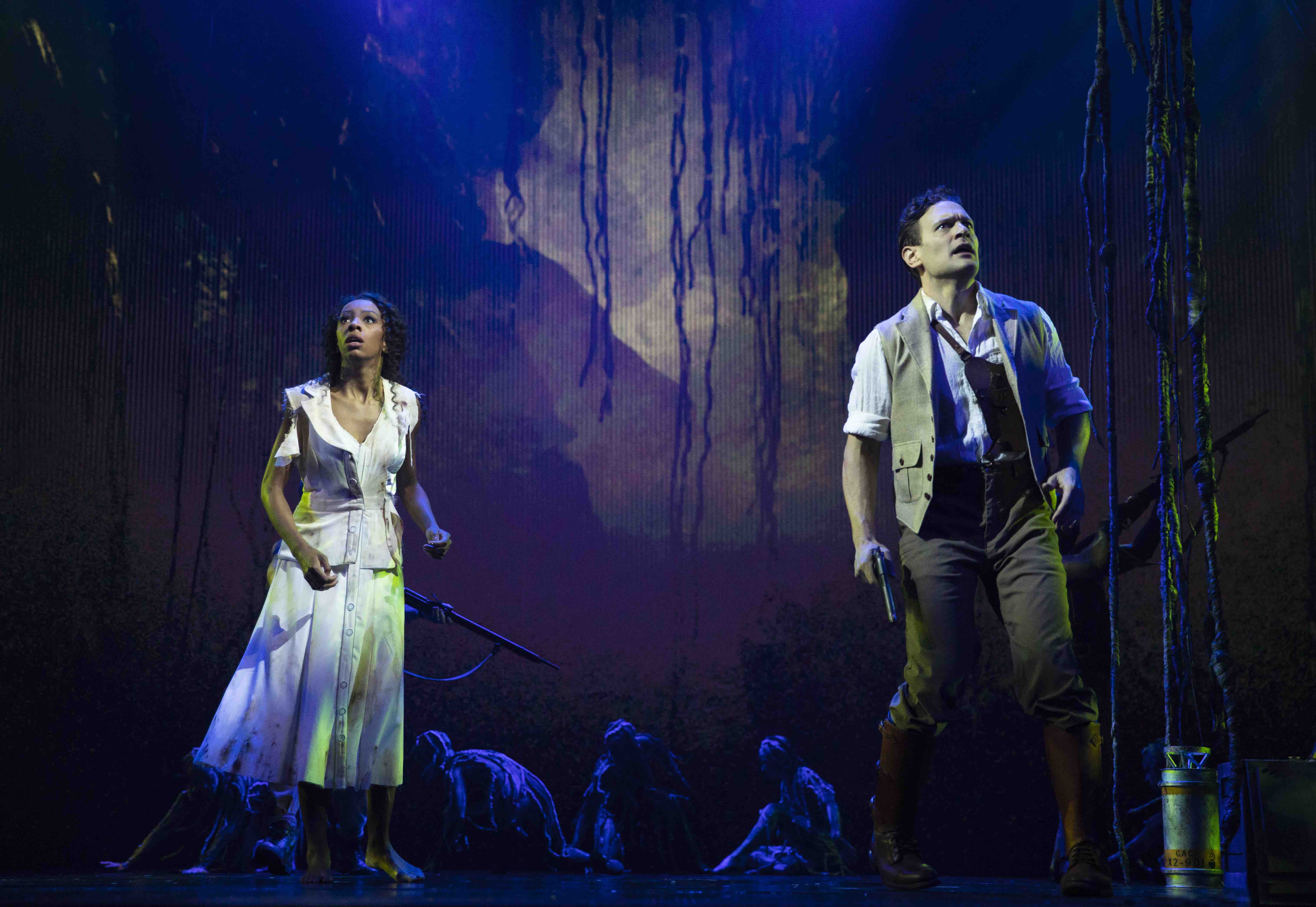 Christiani Pitts as Ann Darrow and Eric William Morris as Carl. Photo © Joan Marcus
Christiani Pitts as Ann Darrow and Eric William Morris as Carl. Photo © Joan Marcus
Part of the problem is the characters, or lack of them. With only two voices to deliver solos – and thanks to Carl and Ann’s lack of mutual sympathy, there are no duets – what emerges are a series of ‘what I’m feeling now’ numbers that endlessly plough the same furrow and inevitably hold up the action in what is meant to be an ‘action’ musical. Ann’s storyline has some shape, but her dilemma is usually the same one. Given that his character is an introspection-free zone, Carl’s songs reveal nothing other than the plot, and as I’ve said, there’s not much of that in King Kong. At the end of the day, you could cut any musical number and still have a show, which begs the question of what they are doing there in the first place.
The other problem is the songs themselves. Perfect can spin a tune and shape a lyric, but there’s a question of craft here, about which American audiences and critics can be sticklers. The use of alliteration here and there feels arbitrary, leaving you unsure whether rhyming ‘survived’ with ‘lies’, or ‘vanilla’, with ‘flotilla’ and ‘will kill ya’ is deliberate or just carelessness. Too often, it feels like he’s spinning lyrical plates, though perhaps that’s more the fault of the person who said, “hey, wait, this is a musical – shouldn’t we have a song here?”
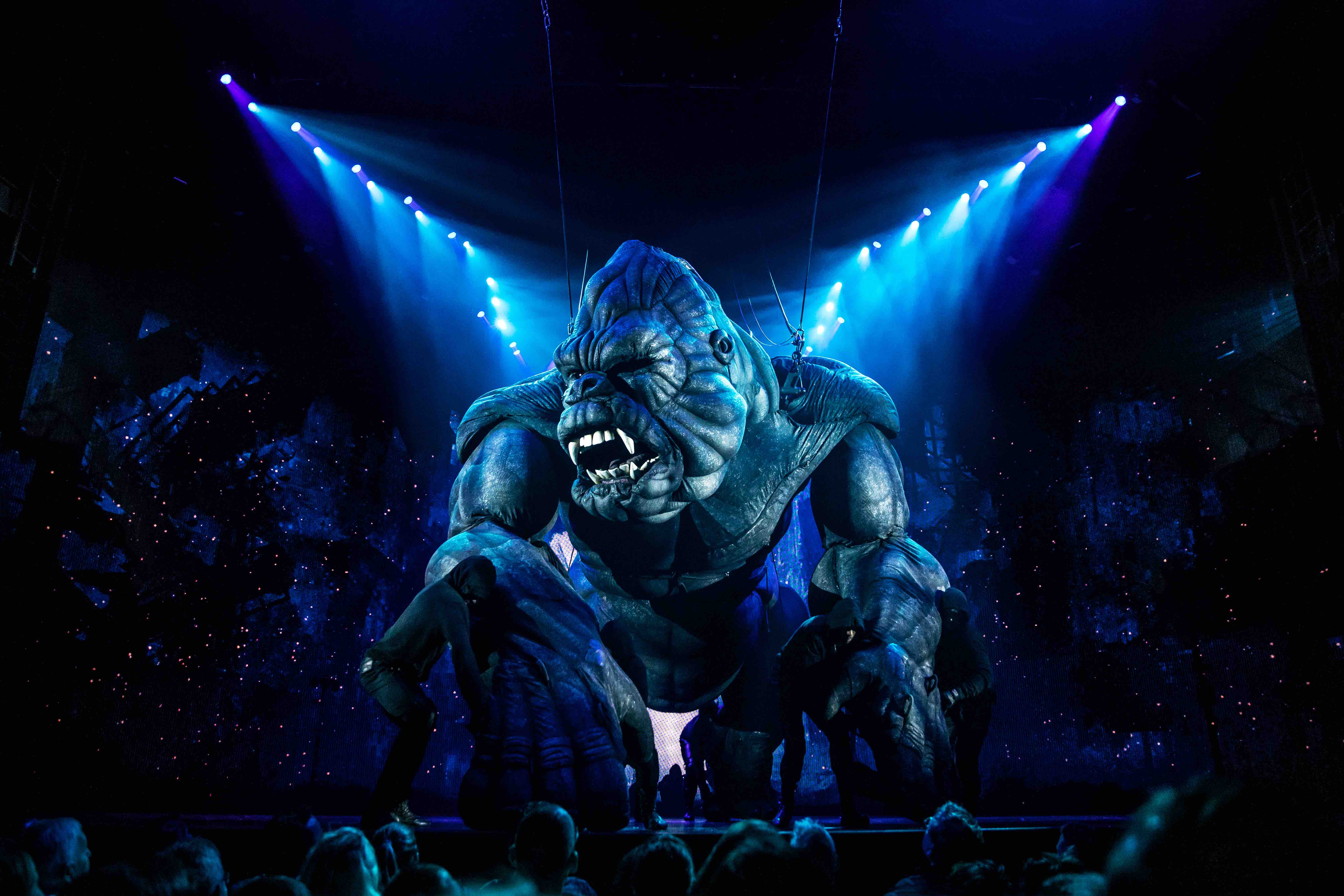 King Kong. Photo © Matthew Murphy
King Kong. Photo © Matthew Murphy
At the end of the day, what you get out of King Kong will likely depend on what you went in for. If you want to goggle at the highest tech show on Broadway, it will be money well spent. If you want to see a well-directed, neatly integrated piece of theatre with innovative dance, you’ll probably have a good enough time too. But if you want Sunday in the Park with George the Gorilla, perhaps look elsewhere. This is, after all, King Kong.
King Kong is at the Broadway Theatre, 1681 Broadway (Between 52nd and 53rd Streets)













Comments
Log in to join the conversation.